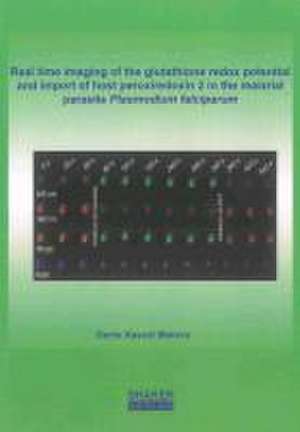Real time imaging of the glutathione redox potential and import of host peroxiredoxin 2 in the malarial parasite Plasmodium falciparum: Berichte aus der Biochemie
Autor Denis Kasozi Matovuen Limba Engleză Paperback – 31 mai 2012
Preț: 279.24 lei
Nou
Puncte Express: 419
Preț estimativ în valută:
53.43€ • 57.14$ • 44.55£
53.43€ • 57.14$ • 44.55£
Carte indisponibilă temporar
Doresc să fiu notificat când acest titlu va fi disponibil:
Se trimite...
Preluare comenzi: 021 569.72.76
Specificații
ISBN-13: 9783844010725
ISBN-10: 3844010726
Pagini: 164
Ilustrații: 76 farbige Abbildungen
Dimensiuni: 149 x 211 x 12 mm
Greutate: 0.24 kg
Editura: Shaker Verlag
Seria Berichte aus der Biochemie
ISBN-10: 3844010726
Pagini: 164
Ilustrații: 76 farbige Abbildungen
Dimensiuni: 149 x 211 x 12 mm
Greutate: 0.24 kg
Editura: Shaker Verlag
Seria Berichte aus der Biochemie

